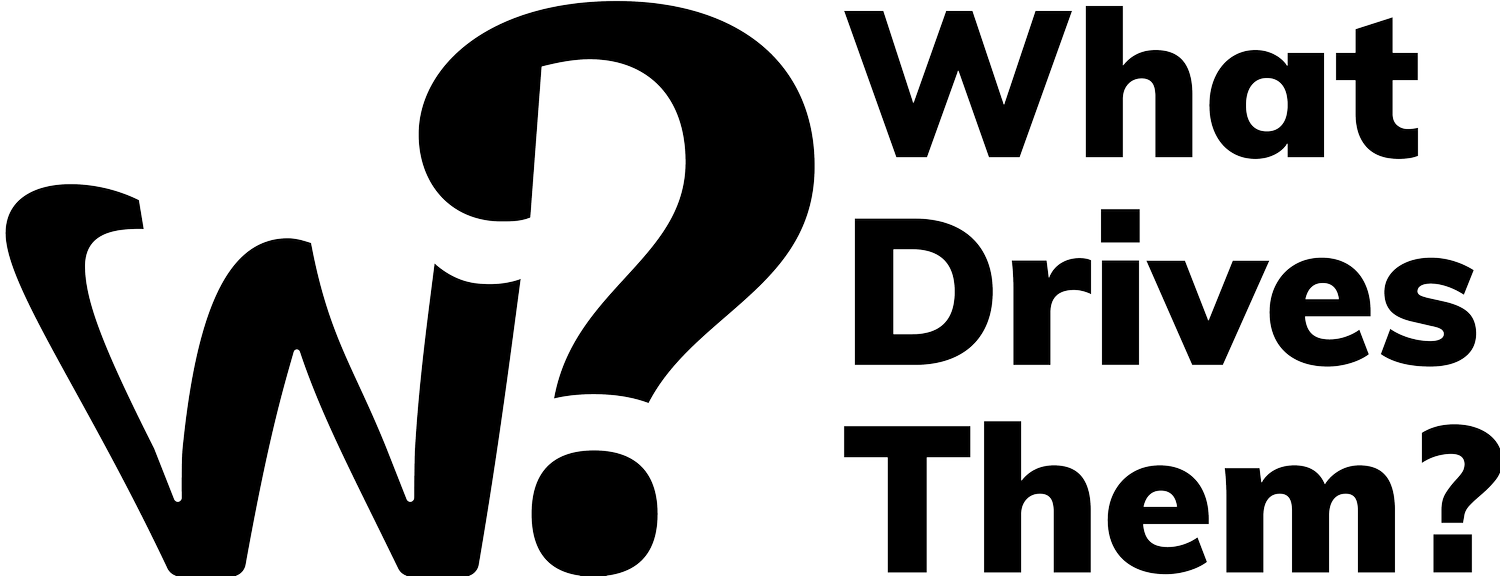How to establish rapport quickly and how the DISC model might be your secret weapon!
In the world of user research, establishing rapport is a game-changer. It's the secret sauce that can turn a mundane interview into a goldmine of insights.
But what exactly is rapport?
Simply put, it's a connection, a bond, a feeling of mutual understanding and trust. It's that intangible thread that links you to your interviewee, making them feel comfortable and open.
Now, you might be wondering, how can I establish this rapport quickly? And more importantly, how can I maintain it throughout the interview process?
That's where the DISC model comes in. A powerful tool that can help you understand and adapt to different communication styles.
In this article, we'll delve into the art of rapport building, the intricacies of the DISC model, and how you can leverage them to enhance your user research. Let's get started.
The Essence of Rapport in User Research
Rapport is the cornerstone of effective user research. It's the bridge that connects you to your interviewee, allowing for a free flow of information.
But why is it so crucial?
Firstly, rapport fosters trust. When users feel understood and valued, they're more likely to open up. They'll share their thoughts, feelings, and experiences more candidly, providing you with richer, more nuanced data.
Secondly, rapport can help mitigate the impact of difficult interviewees. We've all encountered them - the ones who are reluctant to share, or those who veer off-topic. By establishing rapport, you can guide these conversations back on track, ensuring you get the insights you need.
Lastly, rapport can enhance long-term user engagement. It's not just about the here and now. By building a strong rapport, you're laying the foundation for future interactions, fostering a relationship that can yield valuable insights over time.
Quick-Fire Techniques for Establishing Rapport
Establishing rapport doesn't have to be a slow process. With the right techniques, you can build a connection quickly, setting the stage for a productive interview.
One of the most effective ways to establish rapport is to show genuine interest in the person you're interviewing. Ask about their day, their interests, or their experiences with the product or service you're researching.
But remember, it's not just about asking questions. It's about actively listening to their responses, showing empathy, and validating their experiences. This can make the interviewee feel valued and understood, strengthening the rapport between you.
Non-verbal cues also play a crucial role in establishing rapport. A warm smile, a nod of understanding, or maintaining eye contact can all signal that you're engaged and interested.
Here are a few quick-fire techniques to establish rapport:
Start the conversation with a light, non-threatening topic
Use open-ended questions to encourage the interviewee to share
Show empathy and understanding through verbal and non-verbal cues
Validate the interviewee's experiences and feelings
Maintain a positive and friendly demeanor throughout the conversation
Remember, establishing rapport is not a one-size-fits-all process. It requires adaptability and a keen understanding of the person you're interacting with.
So, keep these techniques in your toolkit, but don't be afraid to adapt and improvise based on the unique dynamics of each interview. After all, rapport building is as much an art as it is a science.
Empathy and Active Listening: Your Rapport Building Blocks
Empathy and active listening are the cornerstones of rapport building. They are the tools that allow you to connect with interviewees on a deeper level, fostering trust and openness.
Empathy is the ability to understand and share the feelings of another. It's about putting yourself in the interviewee's shoes, seeing the world from their perspective. This can help you to better understand their needs, motivations, and pain points.
Active listening, on the other hand, is about fully focusing on the speaker, understanding their message, and responding thoughtfully. It's not just about hearing the words, but also picking up on the underlying emotions and meanings.
When combined, empathy and active listening create a powerful rapport-building duo. They allow you to engage with interviewees in a meaningful way, making them feel heard, understood, and valued.
So, as you conduct your user interviews, remember to listen actively and empathize genuinely. These simple yet powerful acts can make all the difference in the quality of your research and the depth of your insights.
DISC Model Decoded: A Guide to Understanding Communication Styles
The DISC model is a powerful tool for understanding communication styles. It categorizes people into four main types: Dominance (D), Influence (I), Steadiness (S), and Conscientiousness (C).
Dominant individuals are direct, results-oriented, and prefer control. They value efficiency and can be quite assertive.
Influential personalities, on the other hand, are outgoing and enthusiastic. They thrive on social interactions and are often persuasive.
Steady types are reliable and patient. They value stability and prefer a steady pace.
Conscientious individuals are analytical and detail-oriented. They prioritize accuracy and logic.
""
Identifying DISC Profiles in User Interviews
Identifying DISC profiles in user interviews can be a game-changer. It allows you to adapt your communication style to match that of the interviewee, enhancing rapport.
Look for cues in their behavior. Dominant individuals may take charge of the conversation, while Influential types may be more expressive and enthusiastic.
Steady types may be more reserved and patient, while Conscientious individuals may focus on details and ask analytical questions.
Remember, people can exhibit traits from more than one DISC profile. The key is to identify their dominant traits and adapt accordingly.
Adapting to Dominant (D) Interviewees
When dealing with Dominant interviewees, be clear and to the point. They appreciate efficiency and directness.
Focus on results and objectives. Show them how the interview will benefit them or contribute to their goals.
Avoid unnecessary details or tangents. Keep the conversation focused and goal-oriented.
Engaging with Influential (I) Personalities
Influential personalities thrive on social interaction. Be enthusiastic and expressive to match their energy.
Encourage them to share their ideas and experiences. They enjoy being in the spotlight and having their opinions heard.
Use stories and anecdotes to engage them. They respond well to a narrative style of communication.
Approaching Steady (S) Types
Steady types value understanding and stability. Be patient and give them time to process information.
Provide clear instructions and expectations. They appreciate knowing what's expected of them.
Build a personal connection. They value relationships and prefer a friendly, non-confrontational approach.
Handling Conscientious (C) Individuals
Conscientious individuals prioritize accuracy and logic. Be precise and detail-oriented in your communication.
Provide data and evidence to support your points. They appreciate facts and figures.
Be patient and allow them to ask questions. They like to analyze information before making decisions.
Non-Verbal Communication and Cultural Sensitivity in Rapport
Non-verbal communication plays a crucial role in establishing rapport. It's not just about what you say, but how you say it.
Pay attention to your body language. Maintain eye contact, use open gestures, and mirror the interviewee's body language subtly. This can help build a sense of connection and understanding.
Remember, different cultures have different norms for non-verbal communication. What's considered polite in one culture may be seen as rude in another.
Cultural sensitivity is key in rapport building. Respect the interviewee's cultural norms and adjust your communication style accordingly.
In a globalized world, understanding and respecting cultural differences can make the difference between a successful interview and a failed one. It's all about creating a comfortable environment where the interviewee feels understood and respected.
Maintaining and Measuring Rapport Throughout the User Interview Process
Establishing rapport is just the first step. The real challenge lies in maintaining it throughout the user interview process.
Consistency is key. Be consistent in your demeanor, your interest, and your respect for the interviewee. This helps build trust and keeps the conversation flowing.
But how do you measure rapport? It's not as tangible as other metrics, but there are signs. Look for increased openness from the interviewee, more detailed responses, and a willingness to engage in deeper conversation.
Remember, rapport isn't a one-time deal. It's a continuous process that needs to be nurtured and maintained.
In the end, the quality of your user research hinges on the strength of your rapport with your interviewees. So, invest time and effort in building and maintaining it.
The Competitive Edge: Leveraging Rapport Building for Growth and Innovation
In a crowded marketplace, standing out can be a challenge. But rapport building can give you that competitive edge.
When you establish rapport, you're not just collecting data. You're building relationships. This can lead to more candid feedback, uncovering unmet user needs, and even fostering user loyalty.
Rapport building also plays a crucial role in innovation. By understanding your users on a deeper level, you can create personalized experiences that truly resonate. This can set your product apart from the competition.
But remember, rapport building isn't a one-off task. It's a continuous process that should be integrated into your overall user experience strategy.
So, leverage the power of rapport building. Use it to drive growth, foster innovation, and ultimately, create better experiences for your users.

